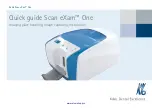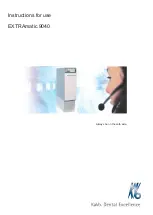
Cement Curing Autoclave User Manual
100072577
Revision H
4
2 Safety
2.1
Machine Hazards
2.1.1
Pressure
Pressurized air and water lines present a hazard if not
depressurized before maintenance or disassembly.
High pressure hydraulic lines are a hazard because they can hold
up to 3,000 PSI (20.7 MPa). These lines are stainless steel or
reinforced hose. Operators must ensure that the pressure in these
lines has been reduced to zero before attempting to disassemble
any high pressure lines. Open the pressure manifold valve.
Confirm that all pressure in the system has been relieved by
observing the pressure gauge on the top of the chamber.
2.1.2
Temperature
The pressure chamber has an electric heating jacket that can heat
the cement slurry to 400°F (205°C). The metal jacket itself can be
considerably hotter, even over 600°F (315°C). Before removing
the pressure chamber, or performing any work on the heating
jacket, allow it to cool to below 120°F (49°C). Monitor the
temperature by observing the temperature controller display when
the chamber is in the heating jacket.
2.1.3
Steam
Water is commonly used to pressurize the cement slurry being
cured. When heat is applied, there is the potential for the water to
become high temperature steam. Because of the risk of burn, body
parts should be kept away from the manual pressure relief valve
(needle valve) when it is being opened.
As the automatic pressure relief valve opens, small amounts of hot
water and steam will be released, which are a burn hazard.
2.1.4
Electrical
The power source for the Cement Curing Autoclave is 115 or 230
Volts. There are electrically active terminals inside the instrument
when the power switch is turned off. Physically disconnect the
power cord from the outlet and instrument before attempting any
electrical or mechanical maintenance. Refer to the electrical
schematic before performing any maintenance or troubleshooting.












































